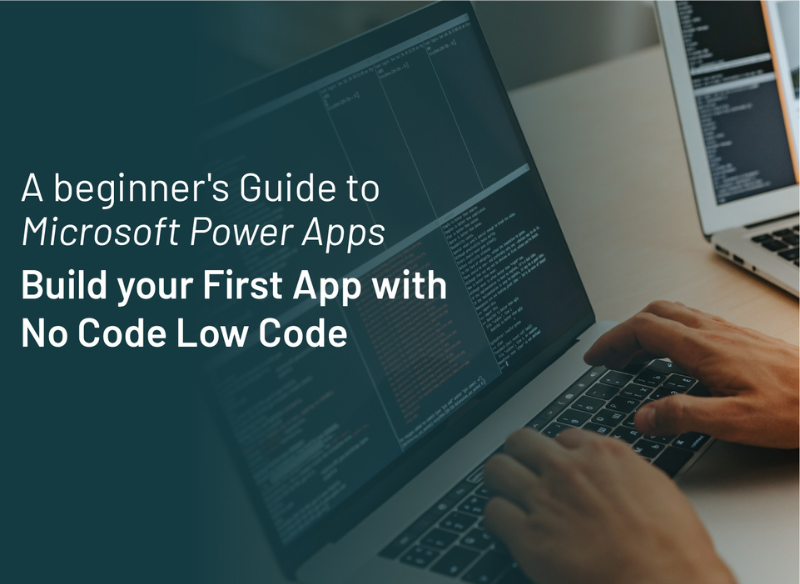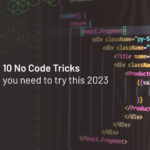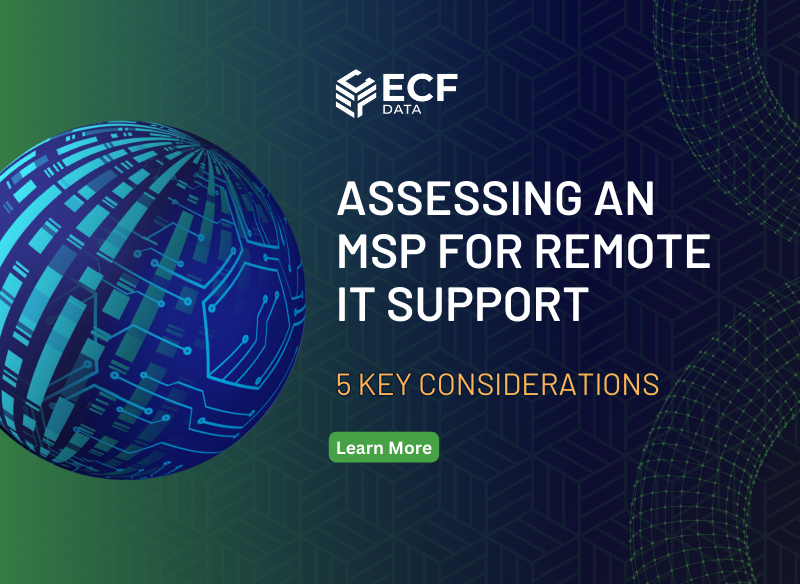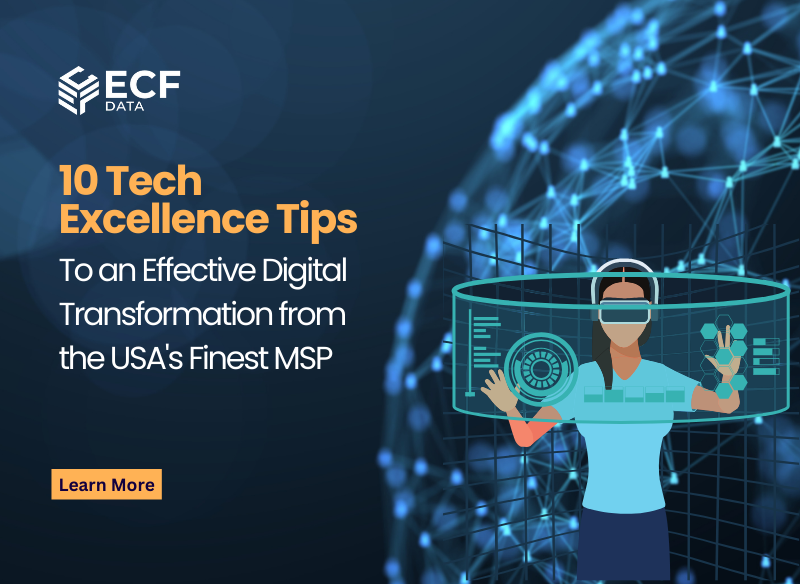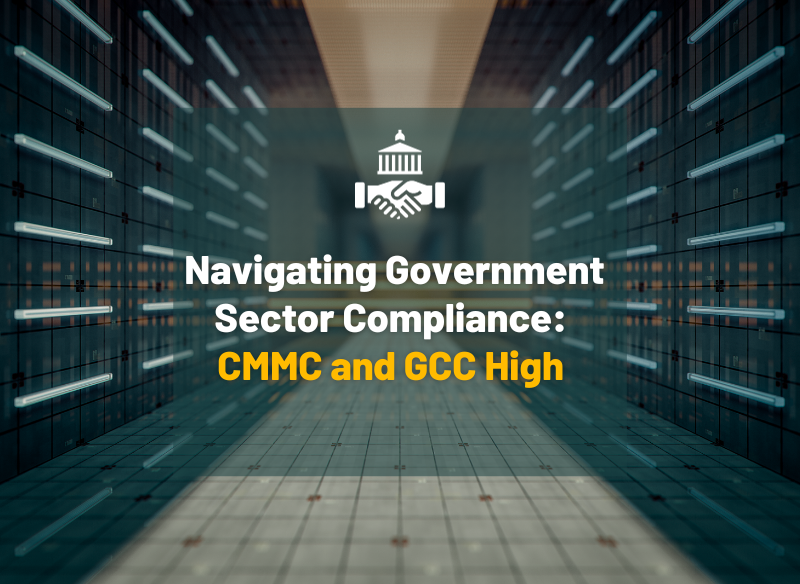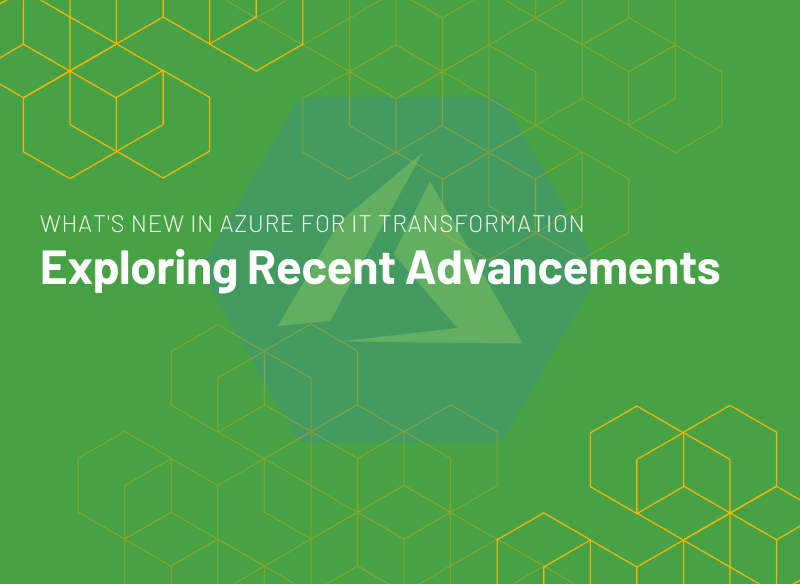-
By: Janina Criador
- IT Consulting
- January 31, 2023
- Comments 0
A beginner’s Guide to Microsoft Power Apps: Build your First App with No Code Low Code
Low-code/no-code development has revolutionized the business industry, allowing entrepreneurs to manage their entire enterprise from any compatible device securely. By democratizing data and fostering citizenship through quick app development benefits, consumers can now benefit from access to real-time insights into product performance and employee productivity – all for a fraction of what it might otherwise cost in investments or resources. Leveraging cutting-edge mobile software technology, businesses are empowered with unified corporate platforms that connect people and processes seamlessly.
Whether you’re a tech novice or an experienced software developer, the Microsoft Power Platform is a powerful and cost-effective tool for creating apps. With low code/no code development, users can design and deploy apps with minimal effort, allowing them to focus on the creative process of making sophisticated applications. This blog post will be the Microsoft Power Apps Guide for low-code/no-code development.
First Things First, Let’s Explore Low Code/No Code Development
Gartner predicts that by 2025, the need for complex analytics solutions will be a thing of the past. Businesses can streamline data insights with low-code/no-code development experiences and allow their users to easily develop tailored embedded analytics content.
What makes low code/no code development the future? Software development once required lengthy coding processes and hiring software engineers to create applications. However, with modern low-code solutions, businesses can now rapidly design enterprise programs without any code.
application makes programming much easier for developers of all levels, allowing them to quickly and efficiently create functional apps with just a few clicks. With out-of-the box objects ready to use combined with the ability to extend upon those already existing pieces without extensive coding, creating applications has never been more convenient or accessible.
Microsoft Power Apps: Leading the Low Code/No Code Development
Microsoft Power Apps is a part of the Power Platform family and a must-have for any organization wanting to streamline its business processes. Its robust features and recent upgrades give users an unparalleled ability to customize solutions – perfect for tackling unique service requests or creating tailored onboarding experiences.
Power Apps empowers organizations to quickly and easily create mobile- and web-based forms, apps, dashboards, and automation by leveraging low-code/no-code development. By connecting with data sources in Microsoft 365’s robust ecosystem of services, Power Apps provides businesses with an easy way to maximize their technology investments while keeping up with ever-changing customer demands. It’s simple to kick-start your app development journey with Power Apps and its innovative low code/no code development approach. So why wait? We’ll show you how!
Power Apps for Beginners: Build Your First App
Ready to create your first app with low code no code? There are two ways to build in PowerApps applications:
- Using any modern browser, or
- Using the PowerApp Modern App (a Windows 8.1 or newer is required)
There are three kinds of applications you can create in low-code/no-code development:
- Canvas – It makes it easier to develop applications like how you operate PowerPoint.
- Portal – Create components, lists, forms, and webpages in the Power Apps Portal Studio.
- Model-Driven – You can add features and define sitemaps through the App Designer.
Since this is a Power Apps for Beginners discussion, let’s dive in and make our first app the simple way.
To start your first app with low-code/no-code, we need a data source to build our app. As an example, we’ll use SharePoint to keep things simple. Creating your first app can be as easy as 1-2-3-4.
On the Power Apps menu, choose “App -> Canvas App” as shown below:
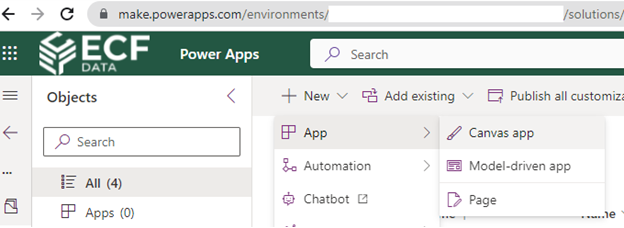
Upon click of Canvas App button, a screen will appear as shown below:
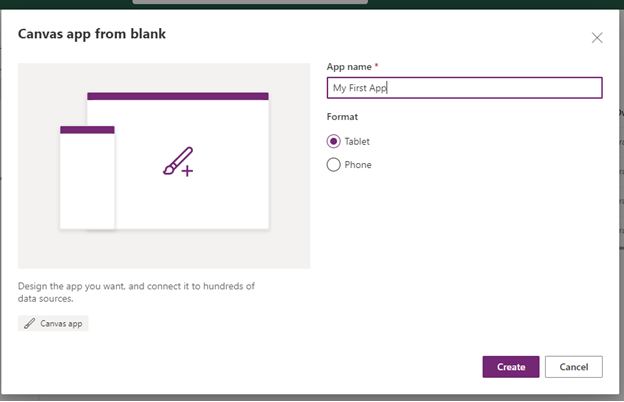
After creation we can make the data source selection as shown below:
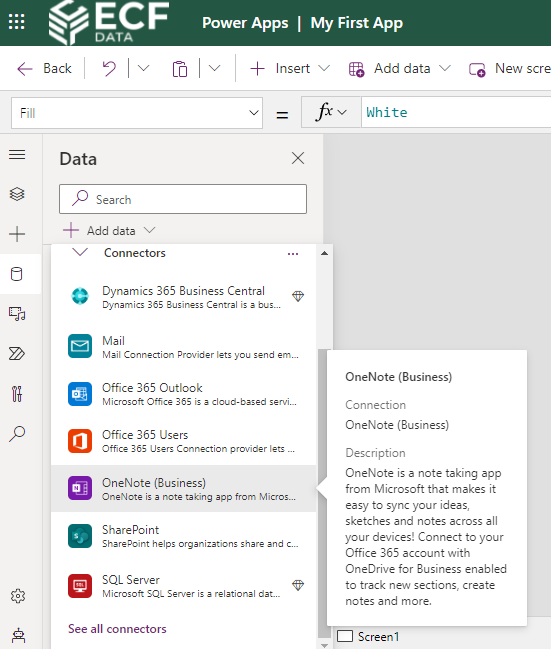
After this, we can add controls on app and we can bind the date source to controls such as Edit Form, Data Table etc.
The app can be shared with staff and colleagues once it is created. To access and share the newly created app, simply open Power App on your phone and click the necessary options.
The step-by-step Microsoft Power App Guide above is just off from default choices. Again, underneath this robust low-code/no-code development is a wide range of available options, architectural preferences, and configurations.
Power Apps for Beginners: Get to Know its Features
Compared to Power Automate and other Office 365 automation tools, Power Apps is equipped with tools and features that allow users to craft robust, professional apps without technical know-how. It makes the app development process more accessible with features such as drag-and-drop canvas controls and an array of templates for streamlining customization. These include:
- A collection of model apps that you might use as a starting point before customizing
- A group of more than 200 connectors for integrating data and systems, including those used by Office 365
- A tight connection with other Dynamics and Office 365 technologies
- A strong support network, including a vibrant PowerApps community.
- A simple drag-and-drop interface for building apps
Things you can do with Power Apps
PowerApps is a game changer in the world of digital transformation, providing users with numerous advantages, including its ease of use, scalability, and flexibility. It enables businesses to unlock new capabilities through cost-effective apps that can be developed quickly on any device.
- Take full advantage of the Microsoft integration without the coding experience requirement by creating applications with Excel formulas.
- Different data sources, both on-premises and in the cloud, can be connected using the tool utilizing bespoke connections or 400+ pre-built connectors.
- REST API can be used to provide unique business logic to simple apps.
- The low code no code development apps can be distributed among other team members inside your company.
- You won’t have to create the same app three times for Android, iOS, and Windows mobile operating systems.
- With PowerApp, anyone familiar with the Microsoft environment may design an app.
Things you cannot do with Power Apps
As a low-code/no-code development platform meant for internal use, expect that it presents limitations. For example, PowerApps applications cannot be expanded by an inner developer via HTML, Javascript, and C# (REST API should be used).
In addition, the functions to which you have access depend on your Microsoft 365 subscription. Planning how you’ll utilize PowerApps requires understanding what your licensing permits and does not, as any PowerApps you develop will need a subscription to function.
Working with a Power App Development Service Expert
Even though Power Apps is meant to be user-friendly, working with an expert can take your work from Power Apps for Beginners to something your company will value.
ECF Data has been an esteemed Microsoft Gold Partner for over ten years, cementing their commitment to providing exceptional services. Among its offered assistance are the Power App Development Service and Power Platform Services. You can take advantage of its extensive background in different areas to give your organization an edge.
We’re committed to being your Microsoft Power App guide at ECF Data. And that means providing reliable support throughout all stages of development so that everything is transparent in translation. That’s why consulting is the first step in our process – we want to ensure that each stage of advancement gets a complete understanding from both sides: yours & ours. With this approach, your goals will be heard and understood while providing feedback within the group.
Then, to ensure your first app with low code/no code is as helpful as possible, we’ll design one to assist your company process with any necessary integrations. ECF Data does not end with app creation as well. A user-friendly low-code/no-code development training will be provided to teach your team how to fully use the app and help them develop the skills needed to create their own applications.
Take the first step towards creating your own app. Our team of Power App experts is ready to get you started on transforming ideas into reality – contact us today for more information!

